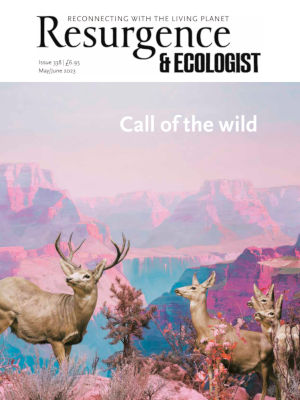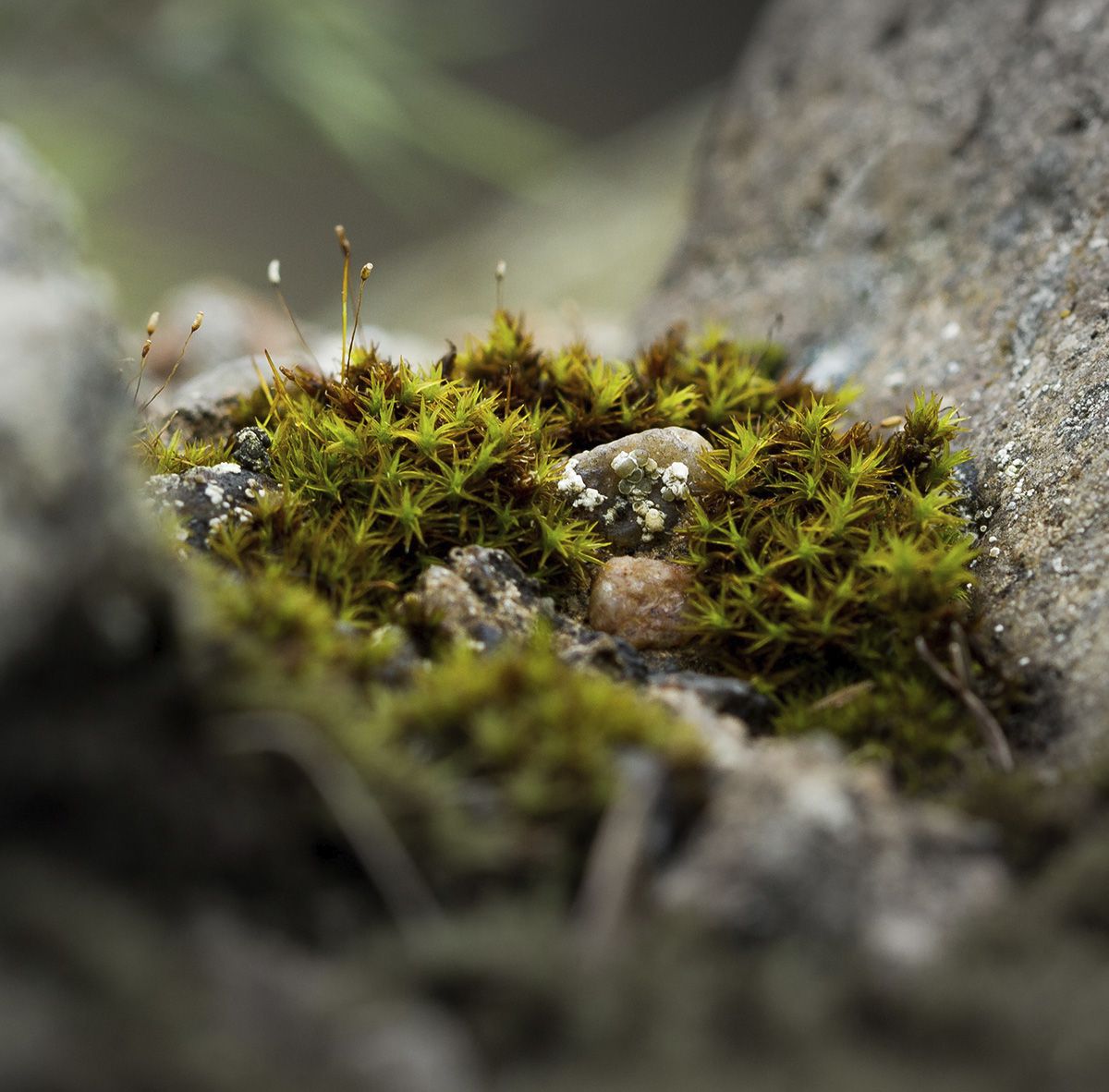Since studying geology at university, I’ve been fascinated by the micro-world. Or, more specifically, what those processes taking place on the microscale can tell us about what’s happening in the macro. What do the grains of beach sand say about the energy of a shoreline? What do geochemical patterns of long-buried clays tell us about the Earth’s revolutions around the sun? Perhaps this is why I felt drawn to this book: a continuous curiosity for what lies beneath our feet, this time in the mysterious realm of mosses.
Gathering Moss: A Natural and Cultural History of Mosses by Robin Wall Kimmerer is a stunning collection of personal essays that explore the elegant and largely unnoticed world of some of the Earth’s oldest plants. Kimmerer is a distinguished teaching professor of Environmental Biology at the State University of New York, and a member of the Citizen Potawatomi Nation, and her unique voice lyrically weaves both her scientific and her traditional knowledge of mosses to equally stimulate the mind and sing to the spirit. You don’t just read about mosses in this book. You meet them, you hear their stories, and you learn what they can teach us about life.
The book begins at the Cranberry Lake Biological Station in the Adirondacks – a wild landscape of dense maple woods with boulders scattered throughout, many of which Kimmerer knows by name. “The names we use for rocks and other beings,” she explains, “depends on our perspective, whether we are speaking from the inside or the outside of the circle.”
Inside the circle, names are intimate, like those we reserve for loved ones. Outside the circle, scientific names suffice. But both are a step towards ‘seeing’. Kimmerer, a master of symbolism, recounts emerging into a ring-shaped meadow hidden inside a circle of boulders. Standing inside the circle, she notices the rock walls dripping with green mosses, but she has no will or desire to assign them their scientific names. And here she reveals her greater responsibility: “I think the task given to me is to carry out the message that mosses have their own names. Their way of being in the world cannot be told by data alone.”
With exquisite vividness, Kimmerer pulls you into her quests to understand mosses and to ‘see’ them more deeply. You dance with her barefoot atop a quaking bog of Sphagnum, poke inside shoreline caves for ‘goblins’ gold’ (Schistostega pennata), and trek through a moss forest in search of a water bear. Each moss species has its own intelligence, spirit and story, my favourite the Splachnum ampullaceum, a fussy species with very specific growing conditions, “On deer droppings. On white-tailed deer droppings. On white-tailed deer droppings which have lain on the peat for four weeks. In July.” But, as Kimmerer reveals how forests, fungi, soil, air, water and other animals all give thanks to mosses, a larger question hangs: as humans, what are the special gifts and responsibilities that we offer plants in return? A meditation made more poignant through her narratives of moss eradication and exploitation.
Kimmerer’s close observations of mosses create a sense of contraction, of getting down on your hands and knees, nose to moss, smelling the damp earth. But there are times of expansion too, of transcendence of scale, where the ecological patterns in moss forests (such as gap dynamics) replicate in the larger forests above. And here her work resonated with me. Much like when I studied geochemical patterns of micron-sized clays to reveal climatic fluctuations in the southern hemisphere, Kimmerer’s work too uncovers a greater interconnectedness in Nature, a “glimpse of the threads that hold the world together”. I find this somehow comforting, not only because it suggests there’s order in the things we don’t often see, but also because Nature appears to give us many opportunities for learning.
I finished this book with deep respect for mosses – how they paved the way for terrestrial life on this planet, how they influence and shape their micro-habitats, and how they choose to adapt their reproductive behaviours to survive. And, through Kimmerer’s essays, I realise mosses have taught me something too: that wild places don’t have to be large and grand to be awe-inspiring. A sense of wild can exist in mini-ature, in a landscape so subtle and secret that it requires us to pull out a hand lens and patiently watch life unfold.
Gathering Moss: A Natural and Cultural History of Mosses by Robin Wall Kimmerer. Penguin, republished 2021. (First published in 2003.) ISBN: 100141997621.







